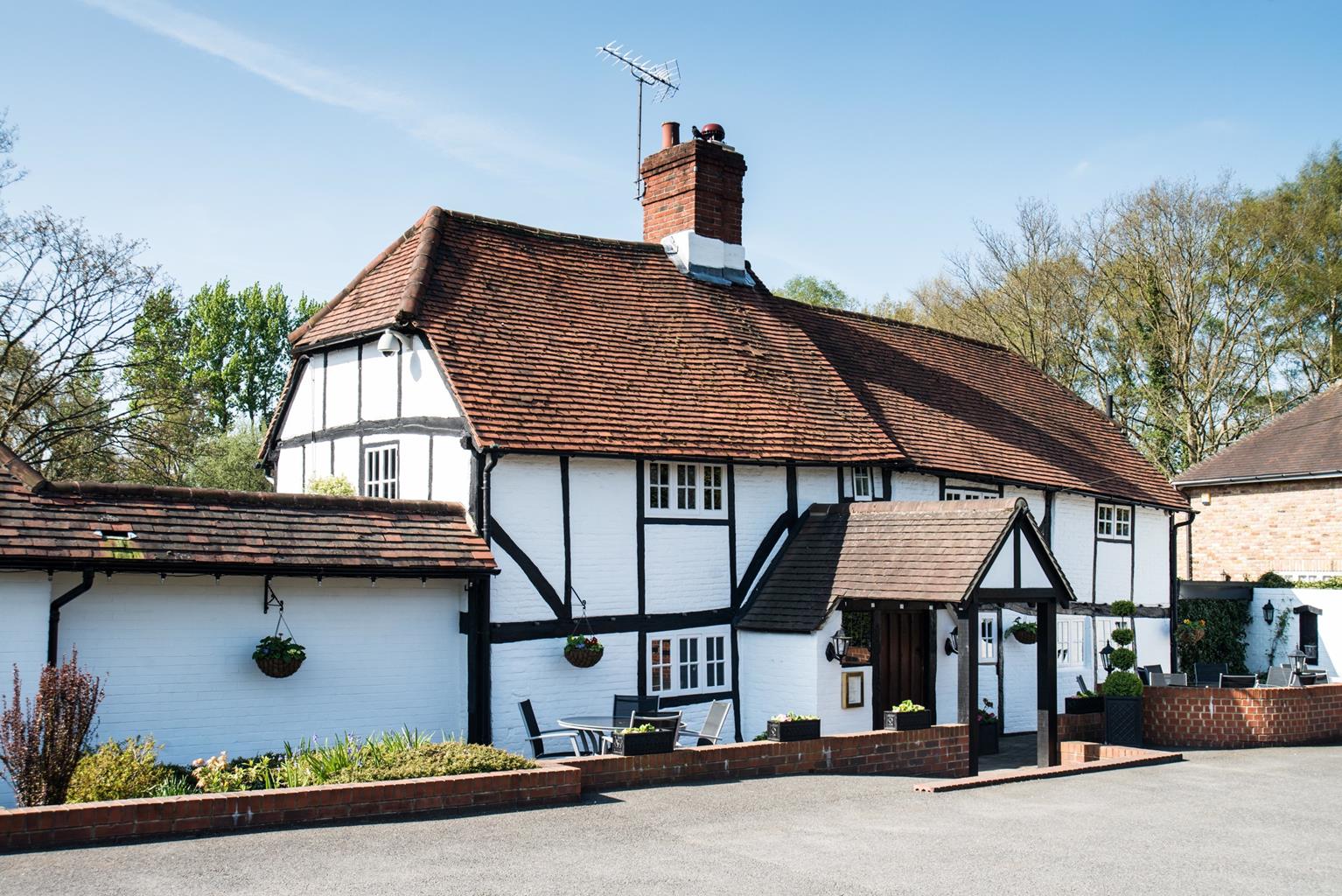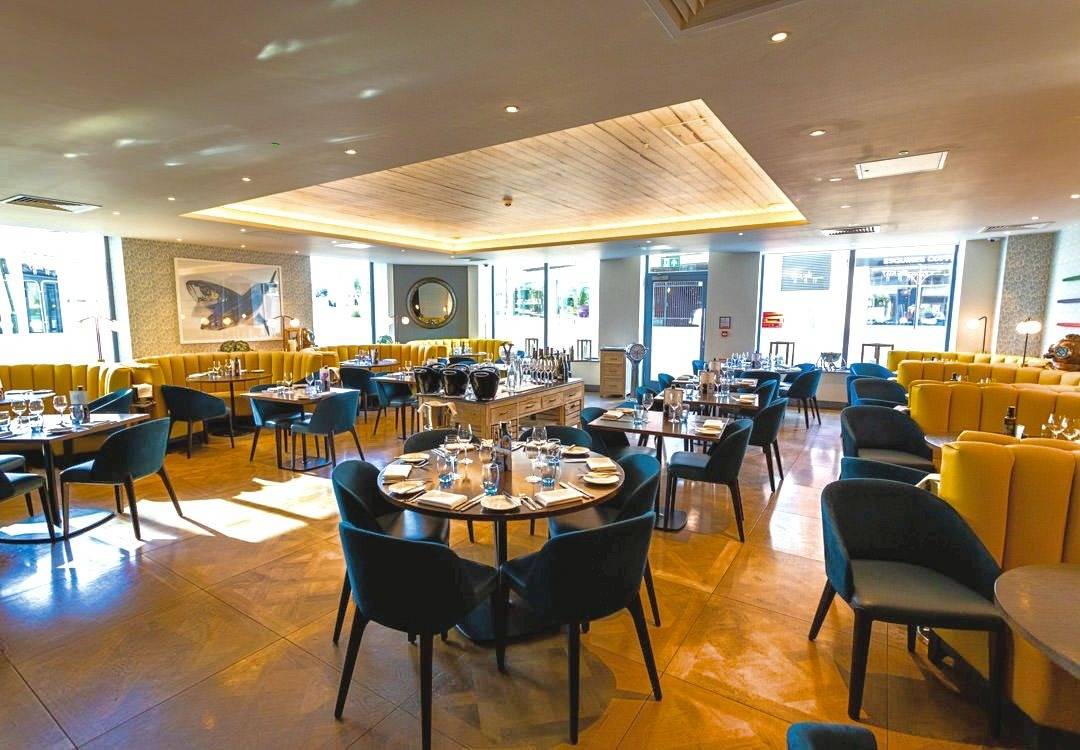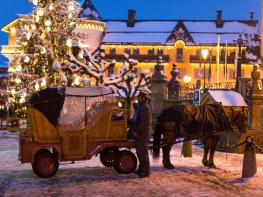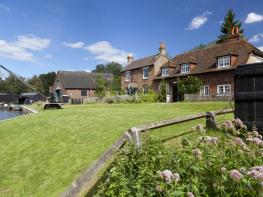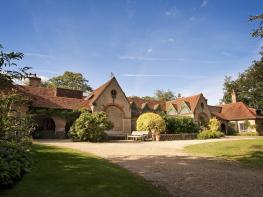Asperion Hillside Hotel is conveniently located for access to Guildford and Woking as well as…
A double loop at Pirbright

A flexible figure-of-eight walk, starting from Pirbright's vast village green.
4.8 miles (7.8kms)
About the walk
Whether or not Henry Morton Stanley actually delivered the famous line, ‘Dr Livingstone, I presume?’, when he tracked down the ailing missionary explorer at Ujiji on Lake Tanganyika, the expression has passed into legend. Although Stanley himself wished to be buried next to the great Dr Livingstone in Westminster Abbey, his grave is in St Michael and All Angels. You’ll come across Stanley’s powerfully simple memorial a few minutes into the walk.
It’s worth going back to the beginning of the story. In January 1841, Elisabeth Parry gave birth to an illegitimate child at Denbigh, in North Wales. The boy was named after his father, John Rowlands, who died just a couple of years later. Young John spent most of his childhood in the poverty-stricken surroundings of St Asaph’s workhouse, until he ran away to sea and worked a passage to New Orleans in the US. There, he took the name of his adoptive father, an American merchant called Henry Morton Stanley. With his new identity, Stanley served in the Confederate Army during the American Civil War and went on to become a special correspondent for the New York Herald. At that time David Livingstone, who was in Africa searching for the source of the River Nile, had been out of touch for some five years. Most people believed him dead, but in 1869 Stanley accepted his editor’s commission to find him.
It was March 1871 before Stanley led a company of around 2,000 men into the African interior. Inevitably, there were problems – people deserted, disease was rife, and there were tribal conflicts along the way. Nevertheless, 700 miles (1,134km) and 236 days later, Stanley finally caught up with the ailing Livingstone and nursed him back to health. The two men went on to explore the northern end of Lake Tanganyika together before Stanley returned to Europe in 1872. Stanley’s subsequent expeditions created new routes for Europeans into the African continent, and led to the foundation of the Belgian-dominated Congo Free State (now the Democratic Republic of the Congo). His career in Africa ended with a three-year mission to rescue Mehmed Emin Pasha, a German explorer and provincial governor, who was pinned down by a local uprising.
In the closing years of the 19th century, Stanley returned to England, married, and moved to Furze Hill, near Pirbright. After five years as the Liberal Unionist MP for North Lambeth, he was knighted in 1899. He died in 1904.
Walk directions
From the car park, face the cricket green and turn right. Follow the edge of the children’s play area around to the right to meet the A324. Cross carefully and follow the lane towards the church, and turn into the churchyard at the little gate on your right. Just inside, you’ll see Stanley’s massive, roughly hewn memorial, bearing his African name ‘Bula Matari’ and the single word ‘AFRICA’. His wife, Dorothy, and other members of the family lie in the same plot, edged with miniature standing stones and yew hedging. Don’t miss the lovely interior of this beautifully kept Georgian church – and look, too, for Stanley’s other memorial, an inlaid brass plaque on the wall opposite the entrance. Leave the churchyard by the lychgate and turn right along the lane. Pass The Old School House and West Heath Road, and continue for 170yds (156m).
Turn left down the signposted bridleway towards West Hall Farm. Follow the track between the farmhouse and the barns, and join a green lane. Reaching the edge of a birchwood, turn left along the woodland bridleway. On reaching a T-junction, turn right with the entrance to Vines Farm in your left and continue along a gravel path to the junction of tracks near a postbox in the wall at Pirbright Lodge.
Double back hard right, and follow the broad track past Long Houses. At the meeting of seven tracks, go straight ahead (bearing left) along the waymarked footpath, and pass Rails Farm buildings and later where the track narrows, turn left onto the Pirbright ranges perimeter track. As you approach the military barrier, turn left onto a broad woodland footpath and follow it through to a T-junction. Turn right; then, 35yds (32m) further on, turn left onto a waymarked bridleway and continue until you cross a small concealed stream.
Turn left onto a signposted bridleway, pass Stream House, then follow the green lane just to the right of Bourne House. Continue for 330yds (302m) to a bridleway marker and turn left into the woods. Go past a stile and then cross the plank bridge into an area of rough woodland. Go past another stile and into a meadow before entering woodland again. Follow the path until it reaches a field with some stables and continue ahead on a wide path. At a gravel driveway, turn right, passing Admiral’s Walk and Buttercup Lodge.
On reaching Pirbright Lodge, turn right and follow the lane out to the A324. Cross over, and turn left onto the roadside pavement that leads you back to the green where your walk began.
Additional information
Country roads, woodland tracks and paths, boggy in places, patchy waymarking, 2 stiles
Wooded farmland conceals several massive houses on edge of Pirbright army ranges
Lead required along road and in woods south of Admiral's Walk
OS Explorer 145 Guildford & Farnham
On Avenue De Cagny car park, opposite the cricket pitch
None on route
WALKING IN SAFETY
Read our tips to look after yourself and the environment when following this walk.
Find out more
Also in the area
About the area
Discover Surrey
Surrey may be better known for its suburbia than its scenery, but the image is unjust. Over a quarter of the county’s landscapes are official Areas of Outstanding Natural Beauty, and along the downs and the greensand ridge you can gaze to distant horizons with hardly a building in sight. This is one of England’s most wooded counties, and has more village greens than any other shire. You’ll find sandy tracks and cottage gardens, folded hillsides and welcoming village inns. There’s variety, too, as the fields and meadows of the east give way to the wooded downs and valleys west of the River Mole.
Of course there are also large built-up areas, mainly within and around the M25; but even here you can still find appealing visits and days out. On the fringe of Greater London you can picnic in Chaldon’s hay meadows, explore the wide open downs at Epsom, or drift idly beside the broad reaches of the stately River Thames. Deep in the Surrey countryside you’ll discover the Romans at Farley Heath, and mingle with the monks at England’s first Cistercian monastery. You’ll see buildings by great architects like Edwin Lutyens and Sir George Gilbert Scott, and meet authors too, from John Donne to Agatha Christie.
Nearby stays
Restaurants and Pubs
Nearby experiences
Recommended things to do
Why choose Rated Trips?
Your trusted guide to rated places across the UK
The best coverage
Discover more than 15,000 professionally rated places to stay, eat and visit from across the UK and Ireland.
Quality assured
Choose a place to stay safe in the knowledge that it has been expertly assessed by trained assessors.
Plan your next trip
Search by location or the type of place you're visiting to find your next ideal holiday experience.
Travel inspiration
Read our articles, city guides and recommended things to do for inspiration. We're here to help you explore the UK.








